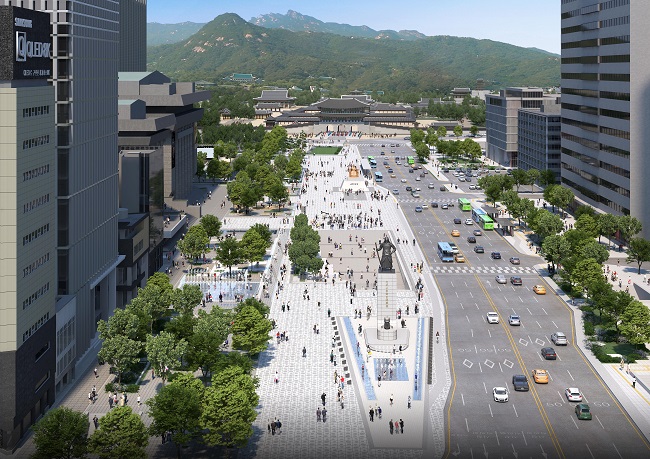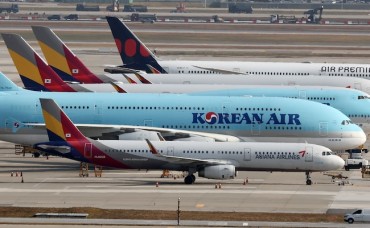
This image, provided by the Seoul city government, illustrates Gwanghwamun Square after it is redesigned.
SEOUL, Feb. 7 (Korea Bizwire) — If a terrorist attack occurs in the Gwanghwamun Square area in central Seoul, Gwanghwamun Station on Subway Line 5 is most likely to become the primary target, a study warned Monday, calling for comprehensive counterterrorism preparedness in accordance with the capital’s rising international recognition.
The study authored by professor Cho Youn-oh of Dongkuk University and her undergraduate students issued such a warning after assessing the risk of terrorism in 16 zones of the central Seoul square.
Gwanghwamun Square is a landmark of Seoul surrounded by the Seoul Government Complex, the U.S. Embassy, Gyeongbok Palace and many other notable cultural, media and financial buildings.
The study found that Gwanghwamun Station is at the highest risk of terrorism among the 16 Gwanghwamun Square zones as it scored 41 points out of the possible 45 points in terms of vulnerability and exposure to terrorist attacks.
The second-highest terrorist risk is Gwanghwamun Square, where the statues of King Sejong and Admiral Yi Sun-sin, both heroes of the Joseon Dynasty (1392-1910), are located, the study said, with a vulnerability score of 40.5 points.
Gwanghwamun Station Exit 7, where large hotels and insurance company headquarters are concentrated, and the Kyobo Building came next with a vulnerability score of 31 points, followed by the National Museum of Korean Contemporary History (30.5 points), the U.S. Embassy (29.5 points) and the Japanese Embassy (29 points).
The main building and annex of the Seoul Government Complex received 26 points, indicating a relatively low risk of terrorism, particularly due to its relatively small floating population and tight security, the study said.
(Yonhap)






